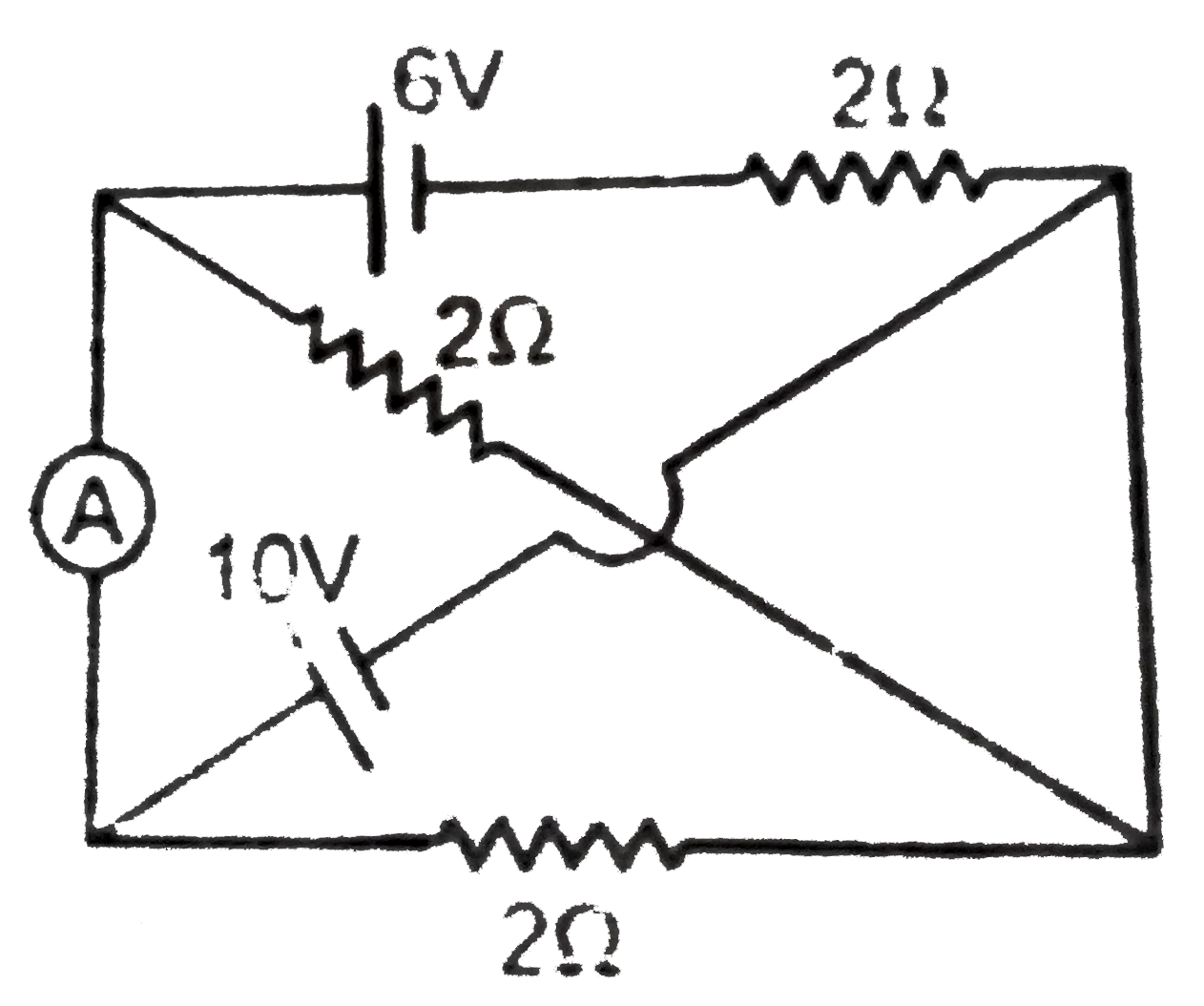How is ammeter always connected in circuits?
in series
in parallel
both in series and parallel
none of these
Step-by-Step Solution:
1. Understanding the Function of an Ammeter:
- An ammeter is an instrument used to measure the current flowing through a circuit. To accurately measure the current, it must be connected in a way that allows it to read the total current flowing through the circuit.
2. Connection in Series:
- The ammeter is always connected in series with the circuit components. This means that the ammeter is placed in line with the circuit so that all the current flowing through the circuit also flows through the ammeter.
3. Reason for Series Connection:
- When connected in series, the same current flows through the ammeter and the rest of the circuit. This is because, in a series circuit, the current remains constant throughout all components. Thus, the ammeter can accurately measure the total current in the circuit.
4. Consequences of Parallel Connection:
- If the ammeter were connected in parallel with a component, the current would split between the two paths (the ammeter and the component). This would result in the ammeter measuring only a portion of the total current, leading to an inaccurate measurement.
5. Conclusion:
- Therefore, to ensure accurate measurement of the current in a circuit, an ammeter must always be connected in series with the circuit components.
- An ammeter is an instrument used to measure the current flowing through a circuit. To accurately measure the current, it must be connected in a way that allows it to read the total current flowing through the circuit.
- The ammeter is always connected in series with the circuit components. This means that the ammeter is placed in line with the circuit so that all the current flowing through the circuit also flows through the ammeter.
- When connected in series, the same current flows through the ammeter and the rest of the circuit. This is because, in a series circuit, the current remains constant throughout all components. Thus, the ammeter can accurately measure the total current in the circuit.
- If the ammeter were connected in parallel with a component, the current would split between the two paths (the ammeter and the component). This would result in the ammeter measuring only a portion of the total current, leading to an inaccurate measurement.
- Therefore, to ensure accurate measurement of the current in a circuit, an ammeter must always be connected in series with the circuit components.
Topper's Solved these Questions
Similar Questions
Knowledge Check
An ideal ammeter is connected in a circuit as shown in circuit diagram. What will be the reading of ammeter (in S.I units)
 A5B7C3D9
A5B7C3D9Assertion : An ammeter is always connected in series whereas a voltmeter is connected in parallel.
Reason : An ammeter is a low-resistance galvanometer while a voltmeter is high resistance galvanometer.AAssertion is True, Reason is True, Reason is a correct explanation for AssertionBAssertion is True, Reason is True, Reason is not a correct explanation for AssertionCAssertion is True, Reason is FalseDAssertion is False, Reason is TrueA voltmeter and an ammeter are connected in the circuit as shown. Resistance of ammeter is say R10 and that of voltmeter is 10R. Then
 Apercentage error in the reading of ammeter (compared to that measured, if both ammeter and voltmeter were ideal) is - 1.0%Bpercentage error in the reading of voltmeter is - 10.0%Cboth (a) and (b) are correctDboth (a) and (b) wrong
Apercentage error in the reading of ammeter (compared to that measured, if both ammeter and voltmeter were ideal) is - 1.0%Bpercentage error in the reading of voltmeter is - 10.0%Cboth (a) and (b) are correctDboth (a) and (b) wrong
How is an ammeter connected in a circuit to measure current flowing through it?
View SolutionWhat is an ammeter? How is it connected in a circuit? Draw a diagram to illustrate your answer.
View SolutionKeeping the potential difference constant, the resistance of an electric circuit is doubled. State the change in the reading of an ammeter connected in the circuit.
View SolutionA dc ammeter and a hot wire ammeter are connected to a circuit in series. When a direct current is passed through circuit, the dc ammeter shows 6 A. When ac current flows through circuit, the ac ammeter shows 8A. What will be reading of each ammeter if dc and ac current flow simulataneously through the circuit?
View SolutionAn ammeter is always connected is series in a circuit because........
View Solution
